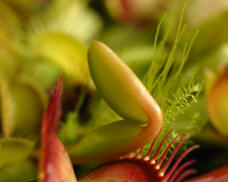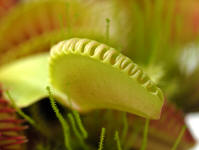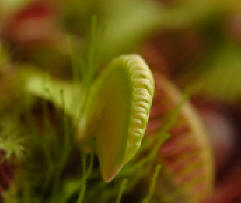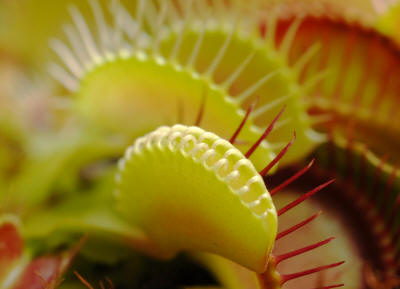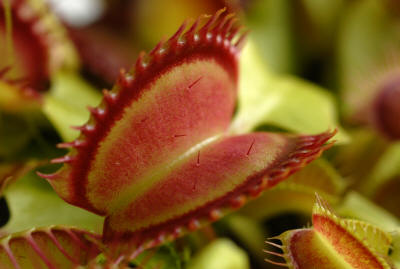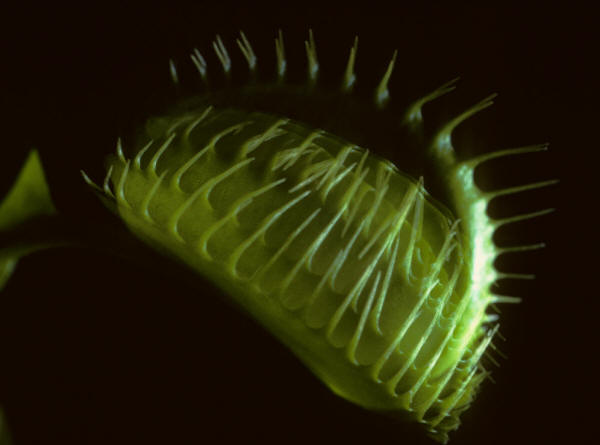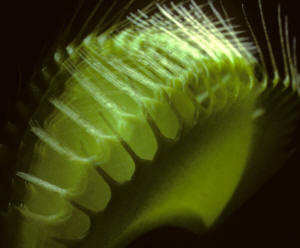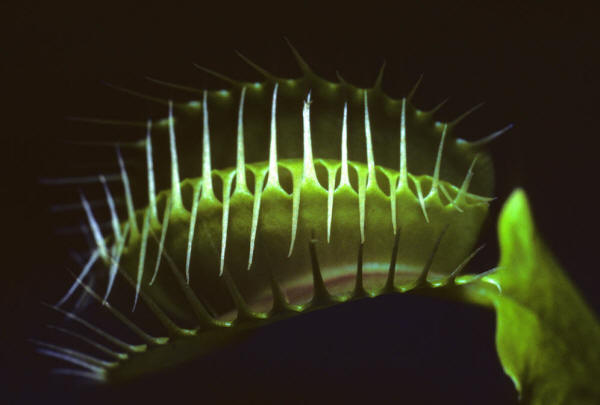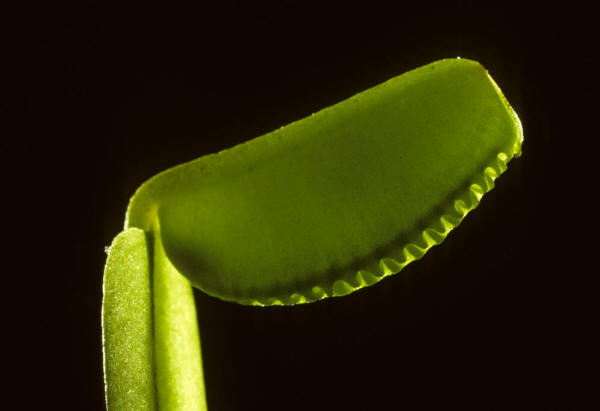|
Carnivorous Plants Story
|
||||||||||||||||||||||||||
|
|
The initial rapid closure phase of the trap, showing a precipitous change in the wall curvature of the trap lobes. A swift intermeshing posture of the marginal guard hairs effectively detains the most agile of insects, such as a fly. Ants and spiders are frequent victims in the wild also. During the initial rapid closure phase, a change in lobe wall curvature seems to occur around the mid point between the midrib and the free lobe margin, and rapidly move upwards toward the marginal spines, similar to the tentacle bending in sundews from the base to the tip. Right after the initial closure, small gaps still remain, allowing a small enough intruder to slip through. This presumably prevents the Venus flytrap from wasting energy by going through the whole digestive process for what would only amounts to an insignificant meal. A Venus flytrap leaf in the making. During the development, marginal spines are neatly folded between the lobes.
Introduction VenusFlytrap Sundews PitcherPlants CobraPlant Butterworts Bladderworts
|
|
